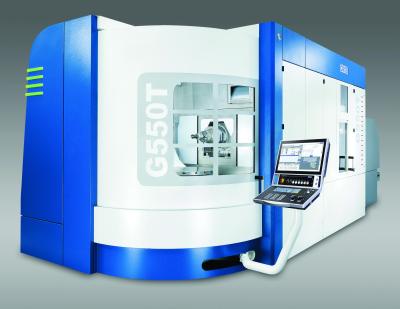
Grob Systems Inc. says its G550T 5-axis mill-turn universal machining center provides the greatest possible positioning flexibility due to the axes’ large swivel range (230ﹾ in the A’-axis and 360ﹾ in the B’-axis). A horizontal spindle position permits the longest possible Z-travel path and optimum chip fall, the company adds.
The machining center can be used in challenging 5-Axis applications, including power skiving capabilities and fir tree mill finishing.
The G550T features a unique arrangement of the three linear axes that minimizes the distance between the guides and the machining point (TCP), providing stability in part production. A tunnel concept permits large components (even in the case of with extremely long tools) to be swiveled and machined within the work area without collision.
The three linear and two rotary axes allow 5-sided machining, 5-axis simultaneous interpolation, as well as GROB TRAORI-turning for precise cutting control.
Contact Details
Related Glossary Terms
- interpolation
interpolation
Process of generating a sufficient number of positioning commands for the servomotors driving the machine tool so the path of the tool closely approximates the ideal path. See CNC, computer numerical control; NC, numerical control.
- machining center
machining center
CNC machine tool capable of drilling, reaming, tapping, milling and boring. Normally comes with an automatic toolchanger. See automatic toolchanger.
- milling machine ( mill)
milling machine ( mill)
Runs endmills and arbor-mounted milling cutters. Features include a head with a spindle that drives the cutters; a column, knee and table that provide motion in the three Cartesian axes; and a base that supports the components and houses the cutting-fluid pump and reservoir. The work is mounted on the table and fed into the rotating cutter or endmill to accomplish the milling steps; vertical milling machines also feed endmills into the work by means of a spindle-mounted quill. Models range from small manual machines to big bed-type and duplex mills. All take one of three basic forms: vertical, horizontal or convertible horizontal/vertical. Vertical machines may be knee-type (the table is mounted on a knee that can be elevated) or bed-type (the table is securely supported and only moves horizontally). In general, horizontal machines are bigger and more powerful, while vertical machines are lighter but more versatile and easier to set up and operate.
